The Places where Faith was Lived Out to the Extreme

The area around the Dead Sea is the lowest place on earth. It is also one of the driest places on earth. The edge of this land is a series of cliffs standing well over 1000 feet over the base of the valley where the Dea Sea lies, collecting what little water there is and turning it into a salty concoction that is great for your skin but deadly to drink. This area is by all accounts rugged and dangerous, not for the faint of heart. The people who chose to live here had to find ingenious ways to make use of the land and the little resources that were available. And the stories that Scripture and history tell about this place illustrate the kind of faith one learns to have when there is little to live on.
I’ll start with what is perhaps the most famous site near the Dead Sea, Masada. Masada is essentially one of those 1000+ foot tall cliffs overlooking the rift valley, that somehow got separated from all the other cliffs, leaving it sort of as a lone, flat-topped, mountain with only one traversable path to the top, a winding trial called the snake path. The Hasmoneans, the Jewish kings before Rome took over, built a fortress upon Masada, but it may have been used as a desert refuge many times before that even as far back as King David who often referred to God as a “fortress,” or in Hebrew “matsada.” (Psalm 18, 31, and 46)
When King Herod rose to power, he built a three-tiered palace on the northern edge and renovated the entire mountain into a desert paradise. He had an aqueduct built to bring in water, which then filled several large cisterns, he had serval buildings and gatehouse, gardens, and a pigeon coop. During the colder winters he could retreat to Masada where it is always warm, his own little artificial oasis overlooking the Dead Sea.
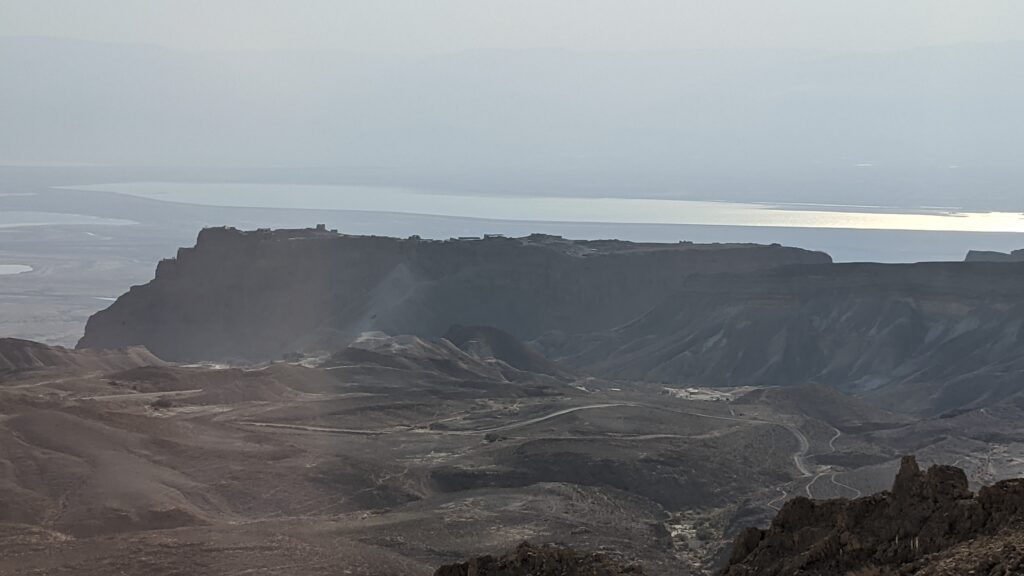
Masada 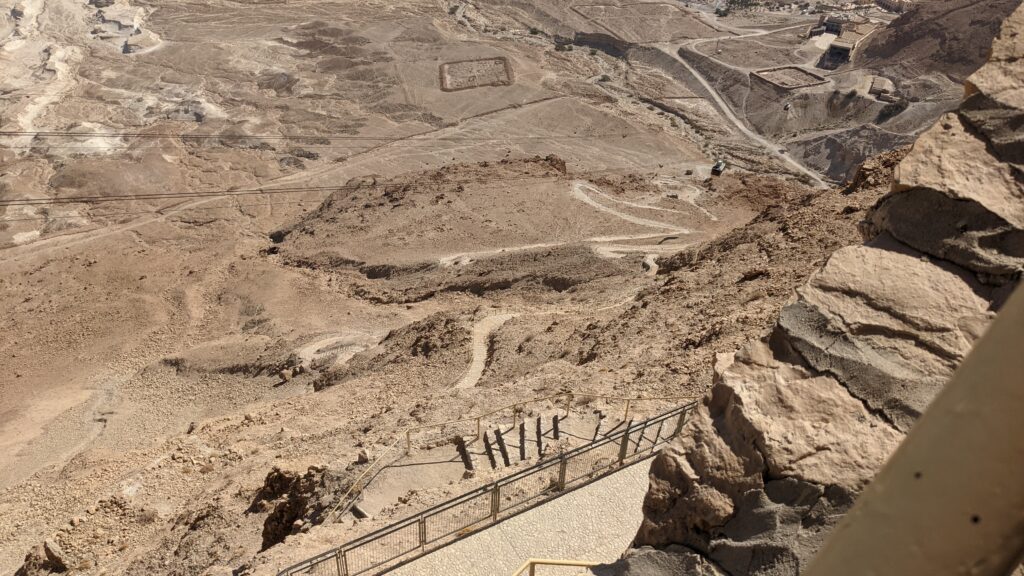
The Snake Path from above 
Remains of the Synagogue 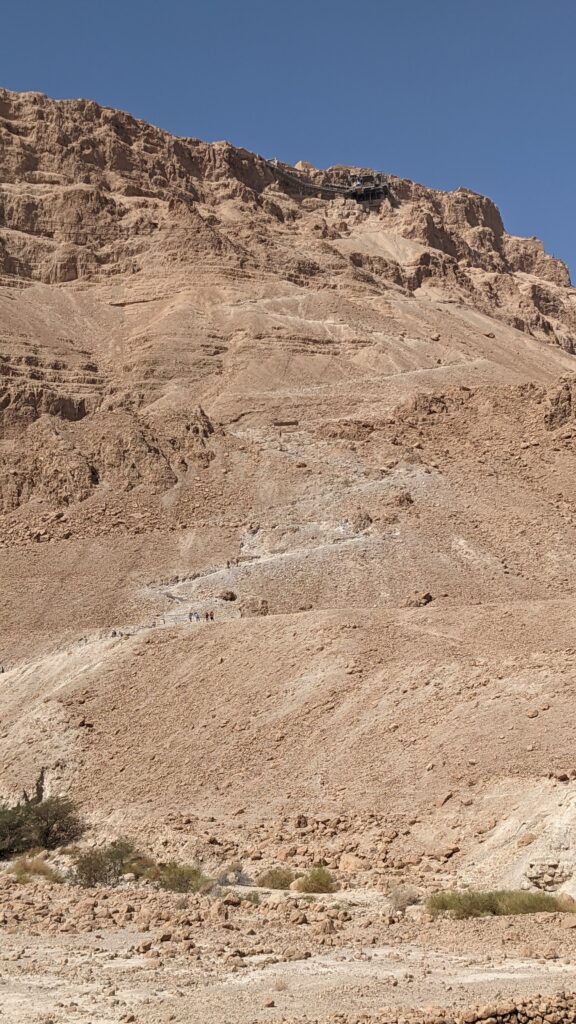
The Snake Path 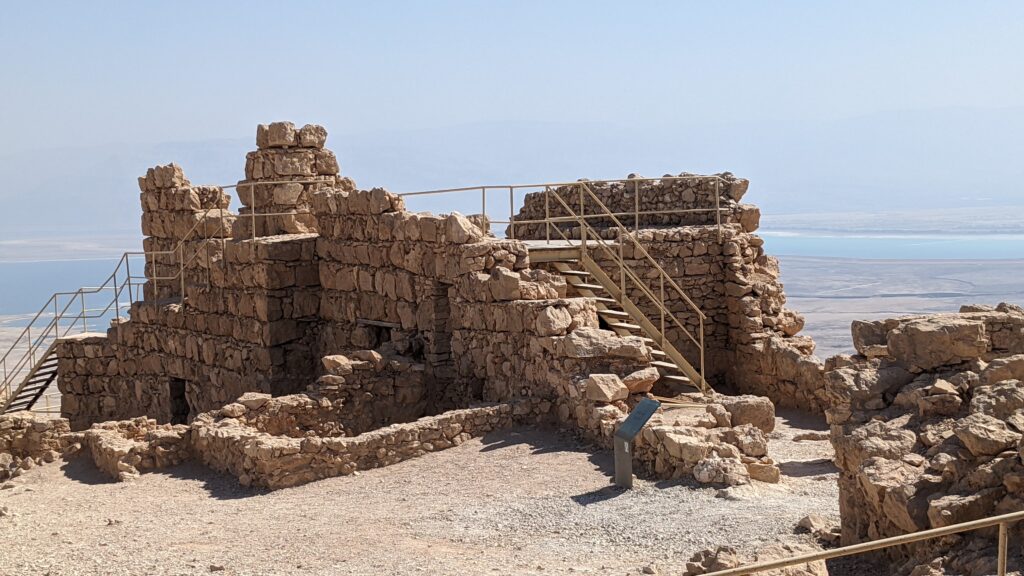
An Old Guardhouse 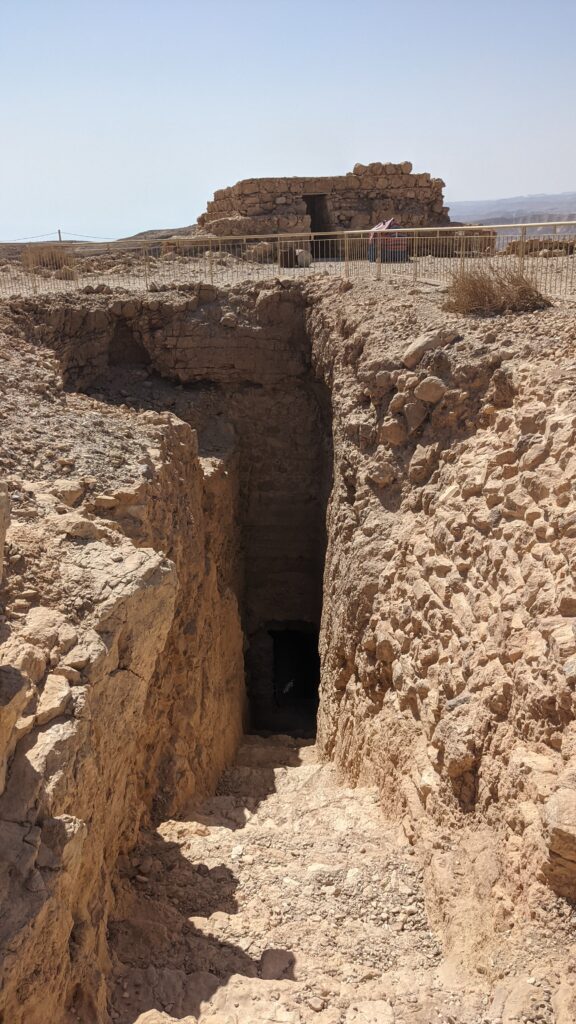
The Entrance to one of the Cisterns
However, Masada is most famous for something that took place over 70 years after the death of Herod. When a group of Jewish extremists, known as the Zealots, revolted against Rome, the Romans destroyed Jerusalem and tore down the temple. The Jews were driven from the area into exile all over the known world. One group of Zealots tried to continue the fight, and holed themselves up at Masada, which because of Herod’s improvements, made a very decent place to live. There was only one way up the mountain, they had water for crops and pigeons for meat. They were even able to convert one of the buildings into a functioning synagogue. For several years they remained there while the Roman commander had his men build a siege ramp to the top. According to tradition, rather than become slaves to the Romans, the Zealots at Masada killed each other, so that none of them actually committed suicide.
That is not the most comforting story, but it illustrates the kind of faith these people had. They did not give in even when there was no possible way for them to succeed. They lived and died for their faith and stood up against the most powerful empire of the day. There are other stories like this with far happier endings throughout Scripture – the story of Shadrach, Meshach, and Abednego comes to mind. However, I think it’s interesting to hear a story that does not have the happy ending, as a reminder that faith in God does not always mean that he will protect you from physical harm, but rather that you are secure in Him no matter what the outcome is.
About 10 miles north of Masada is the closest year-round source of fresh water, the spring of Ein Gedi. Coming out of the desert of the Dead Sea, Ein Gedi looks like another planet. The Fresh water cutting through the valley brings forth all sort of trees and bushes and sustains the young goats (Hebrew: “gedi”) that call this valley their home.
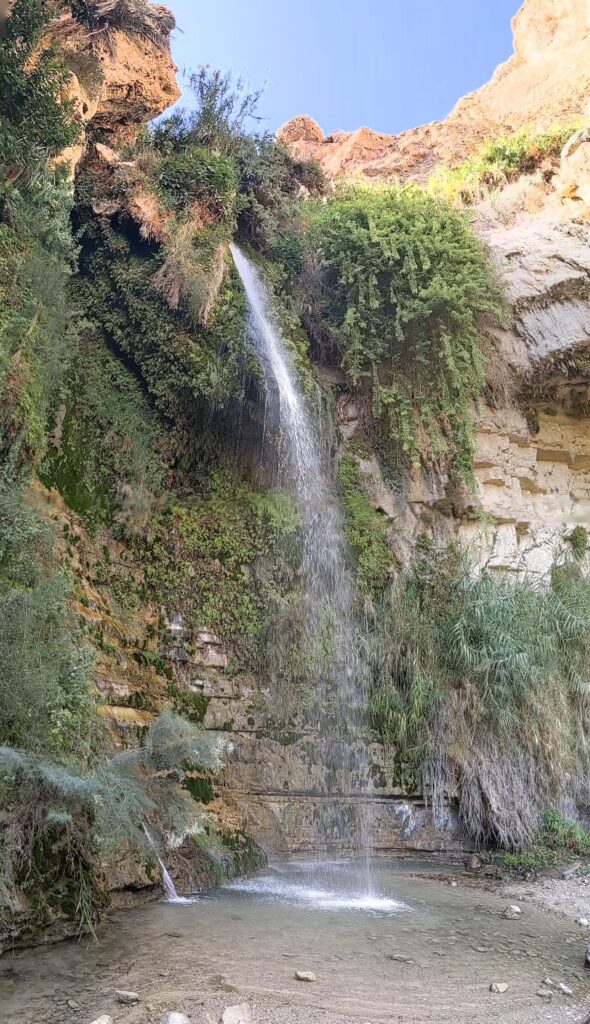
David and his men hid from King Saul at Ein Gedi, and it’s easy to see why. They would have water in an otherwise baren land. they had caves for shelter, and they had easy access either up into the hills or down into the Rift Valley. In 1 Samuel 24, Saul traces David to Ein Gedi. While relieving himself in one of the caves, David sneaks up behind Saul, and has every opportunity to kill him and take the throne of Israel he had been promised. Instead, he cuts off a corner of Saul’s robe, for he refuses to harm the Lord’s Anointed (Hebrew: “Messiah”).
He said to his men, “The LORD forbid that I should do this thing to my lord, the LORD’s anointed, to put out my hand against him, seeing he is the LORD’s anointed.”
1 Samuel 24:6
David’s faith was not only one of surviving in the desert while the king tried to kill him, but on of waiting for God’s timing. God had promised David the throne, he didn’t need to take it for himself, God would give it to him when the time was right.
Further up the coast of the Dead Sea there is a settlement that is important not for what happened there, but for what was discovered nearby. The site is called Qumran, and in the caves nearby the Dead Sea Scrolls were discovered. The Dead Sea Scrolls are, without argument, the most important Archaeological discovery of the past century, especially in the realm of Biblical History and Scholarship. While the Dead Sea Scrolls that have been found do include the earliest copies of almost all of the Old Testament, that is only a fraction of the scrolls that have been found, some of the scrolls describe the community that wrote and copied the scrolls, what is assumed to be the community at Qumran.
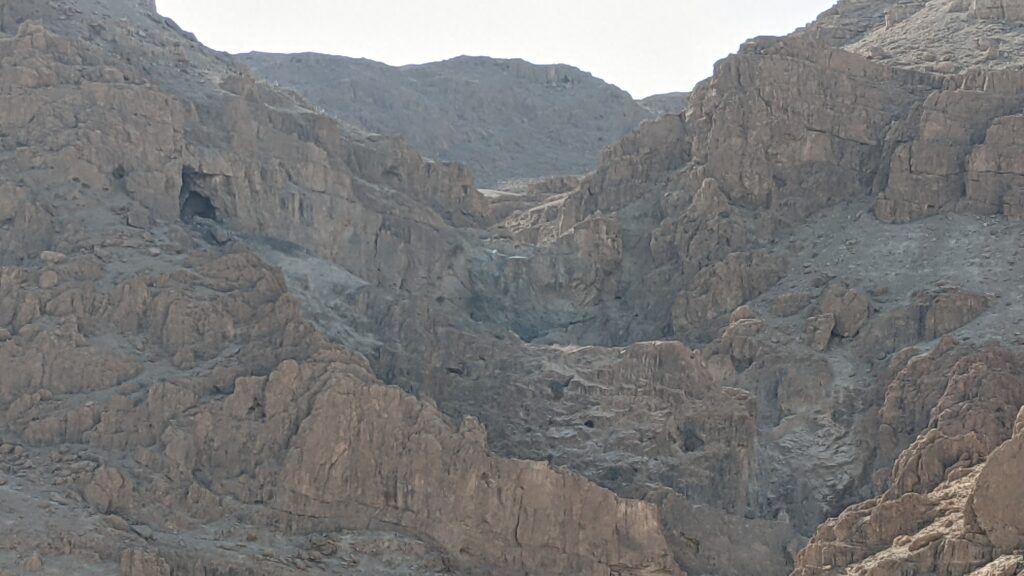
The Caves above Qumran 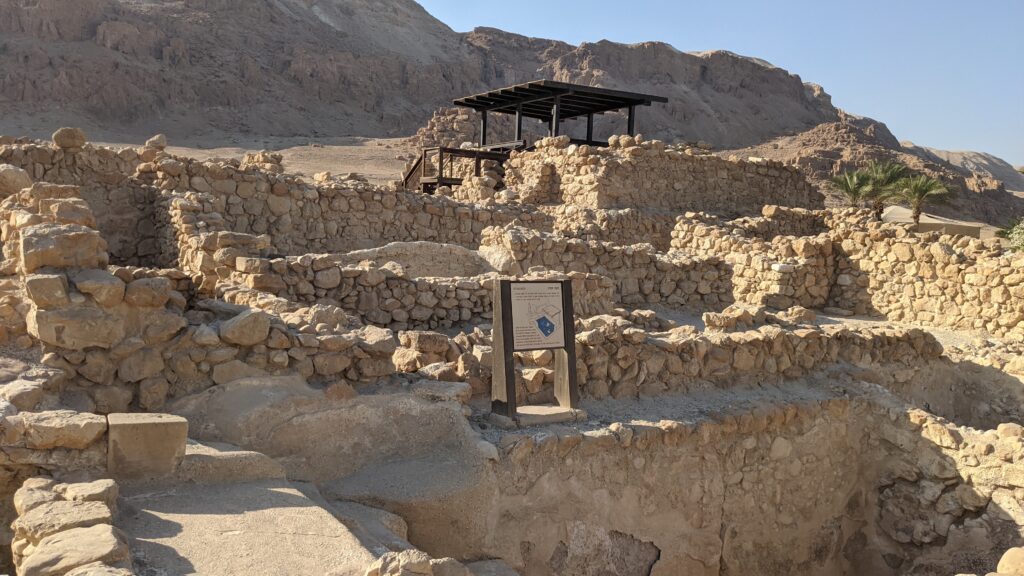
Qumran 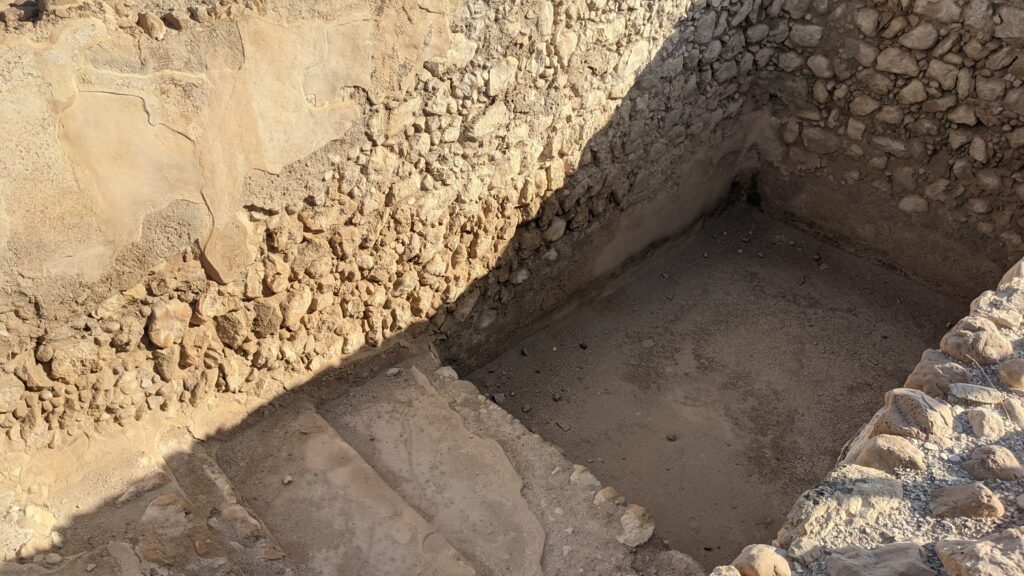
A Mikveh, Ritual Bath 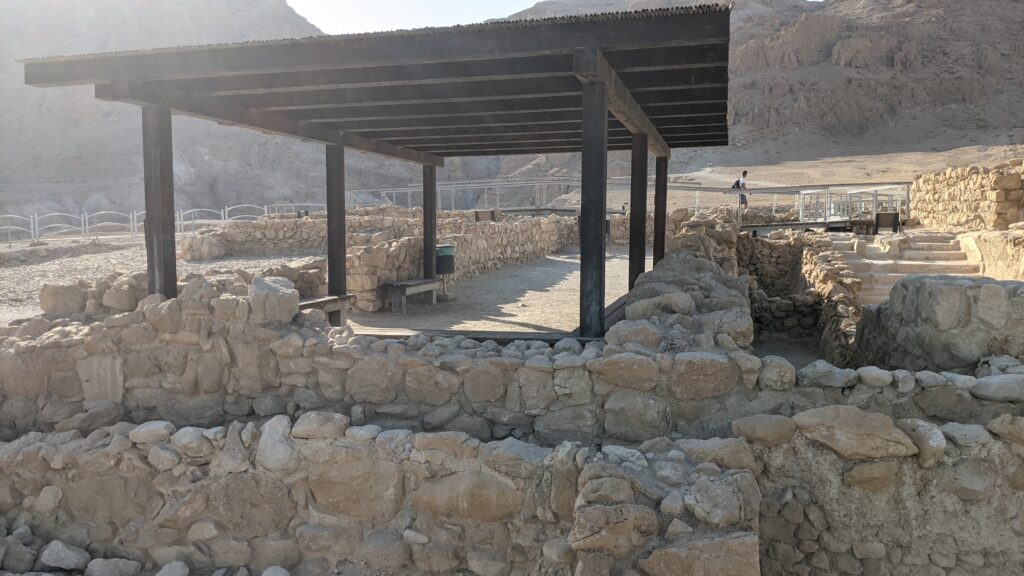
The Scriptorium? 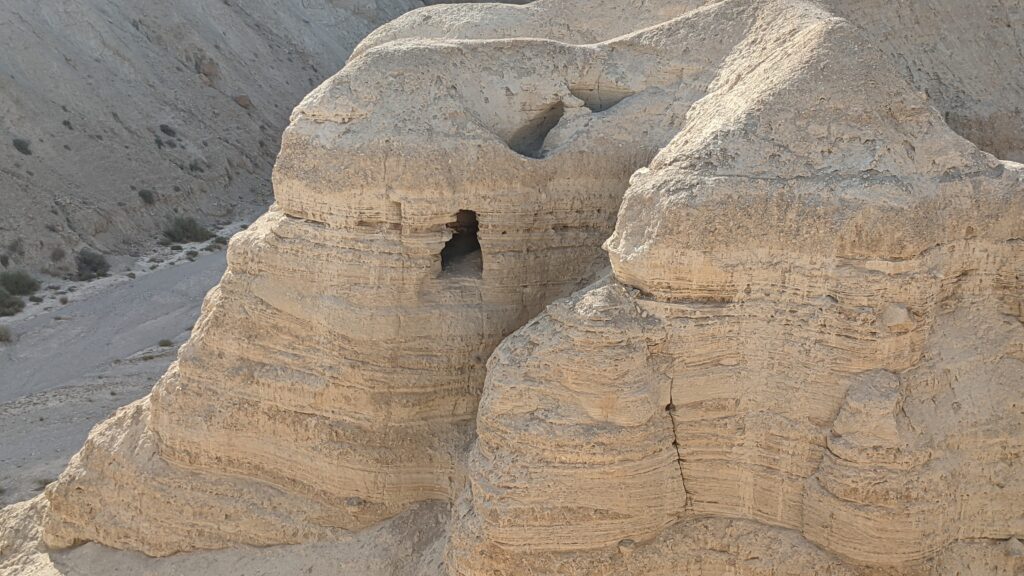
Cave 4, one of the Dead Sea Scroll Caves,
While it is not certain, the community at Qumran appears to be a group of Jewish separatists known as Essenes. From the descriptions of Josephus and other ancient historians, the info in the scrolls themselves, and the structure of the site of Qumran, the Essenes were a Jewish sect focused on ritual purity, and true faith. They lived a monastic lifestyle in the desert, where they worked together to grow food, make pottery, study and copy the Bible and other scrolls, and living in community with each other. According to the ancient historians they had no personal belongings and were celibate. At the site itself, several pools and ritual baths were found, fed by aqueduct from a local wadi. There was also what appeared to be a large community hall, near a pantry with hundreds of clay plates, suggesting communal meals. Finally, there was one room which appeared to be a place of study and scribe work, a scriptorium, with benches for reading and writing scrolls.
There has been some suggestion that John the Baptist may have been involved with the Essenes and Qumran community. He lives in the desert, celibate, and ascetic (he lived on grasshoppers after all), and he focuses his ministry on immersion, similar to the Essenes/Qumranites who regularly immersed themselves in the ritual baths. Personally, it is my opinion that John the Baptist was kicked out of the Qumranite community for being too extreme even for them, but I cannot prove that.
Perhaps what is most interesting about the Qumranites and Essenes is how much they are willing to give up in order to follow God. Their practice is related to the monastic traditions of many Christian groups throughout history. Christian monks have for centuries practiced celibacy, and denying themselves in order to grow closer to God. Many of those same monastic groups were responsible for the copying of Scripture through the ages. There is something to be said of denying yourself, taking up your cross, and seeking after God. I’m not saying that we all must become monks, but in separating yourself from the comforts and temptations in the world you learn to trust in God more.
So next time you find yourself in a metaphorical desert, where nothing seems to come easy, I encourage you not to see it as a curse, but as an opportunity to strengthen your trust and faith in God. Look to God in the desert, learn to trust Him, and allow Him to move in your life.
